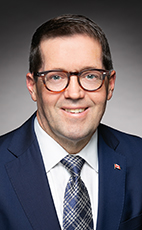The Standing Committee on Indigenous and Northern Affairs (INAN) reviews, examines and reports on issues affecting First Nations, Inuit, Métis peoples and northerners.
By Joshua Brass Fraser, Indigenous Politics (@IndigPoli)
In the House of Commons Standing Committees, members (MPs) are selected based on their experience and interest in specific areas. While Ministers typically do not participate, their Parliamentary Secretaries are involved. Generally, opposition parties assign their shadow ministers/critics to relevant committees.
In the Indigenous and Northern Affairs (INAN) Committee, MPs without specific portfolio assignments may participate due to their background in Indigenous communities or having a significant number of Indigenous constituents in their districts. This diversity enriches the committee's discussions.
The New Democratic Party (NDP), with only seven elected MPs, lacks official party status, limiting their committee participation. Membership on committees is valuable as each member wields voting power and can influence legislation by expediting or delaying it, as well as summoning witnesses for insights, facts and experience on the file, bill or subject the committee is discussing or reviewing.
In the 35th Parliament's first session, the INAN Committee comprises 5 Liberal MPs, 4 Conservative MPs, and 1 Bloc Québécois MP. BQ MP Sébastien Lemire's role is pivotal, potentially influencing decisions within the committee.
Understanding the background and composition of the INAN Committee members provides insight into the diverse perspectives shaping discussions and decisions within the committee.
Below, I break down the background information of INAN Committee members:
STANDING COMMITTEE ON INDIGENOUS AND NORTHERN AFFAIRS (INAN)
Liberal Committee Members
Committee Chair Terry Sheehan, MP for Sault Ste. Marie-Algoma has 12.9% Indigenous voters in its electoral district.
Member: Mi'kmaq MP Jaime Battiste is the Parliamentary Secretary to the Minister of Indigenous Services with 10.9% Indigenous voters in Cape Breton-Canso-Antigonish, NS.
Member: Phillip Earle has 42% Indigenous voters in his Labrador, NFLD electoral district.
Member: Brendan Hanley is the Parliamentary Secretary to the Minister of Northern and Arctic Affairs. He is the MP for Yukon, which has 22.1% Indigenous voters.
Member: Ginette Lavack is the Parliamentary Secretary to the Minister of Crown-Indigenous Services, where 17% of the voters are Indigenous in her St. Boniface-St.Vital, MB electoral district.
Conservative Committee Members
Committee Vice-Chair: MP Jamie Schmale is Shadow Minister for Crown-Indigenous Relations; he represents Haliburton-Kawartha Lakes, ON. The Indigenous voting population for this riding is 2.7%.
Member: MP Eric Meilillo is the Conservative MP for Kenora-Kiiwetinoong, ON, which has 40.4% Indigenous voters in his electoral district. He is also the CPC Shadow Minister for the Federal Economic Development Agency for Northern Ontario.
Member: Former Enoch Chief MP Billy Morin, and is Conservative MP for Edmonton Northwest, AB, and is the Shadow Minister for Indigenous Services. Edmonton Northwest has 5.6% Indigenous voters in the electoral district.
Member: MP Bob Zimmer is the CPC Shadow Minister for Arctic Affairs & Canadian Northern Economic Development Agency. Zimmer is the MP for Prince George-Peace River-Northern Rockies, BC. Their is 15% Indigenous voters in electoral district.
*Shadow Minister is a term often used by the Official Opposition in place of Critic.
Bloc Québécois Committee Member
Committee Vice-Chair Sébastien Lemire is the Bloc Québécois MP for Abitibi—Témiscamingue which has an Indigenous voter population of 15%. Lemire is Bloc Québécois Spokesperson (aka Critic) for Indigenous Relations and Northern Development.
GENERAL INFO - https://www.ourcommons.ca/committees/en/INAN
MEETINGS - https://www.ourcommons.ca/Committees/en/INAN/Meetings
Why do I always put the Indigenous population of each MP’s riding? As representatives, MPs must consider the diverse makeup of their constituents to ensure inclusive decision-making. Highlighting the number of Indigenous voters in each MP's riding serves as a crucial reminder for them to prioritize the needs of all community members, including Indigenous constituents. This practice encourages accountability and fosters a more inclusive approach to governance.
Note: The information on the Indigenous population in each riding (electoral district) comes from the 2021 Census, transposed on the 2023 electoral district redistribution process. (Source: StatsCan and Elections Canada, 2025)
#INAN #StandingCommitteeonIndigenousandNorthernAffairs #HouseofCommons
#indigpoli #indigmps #firstnation #metis #inuit #35thparl #indigpoli #indigenous
X/Twitter | Facebook | Email @indigpoli











